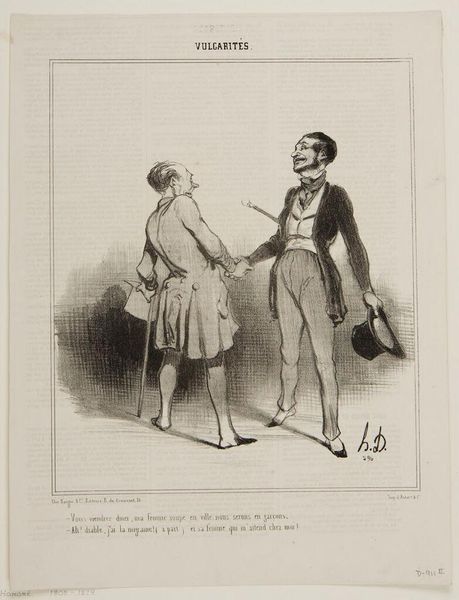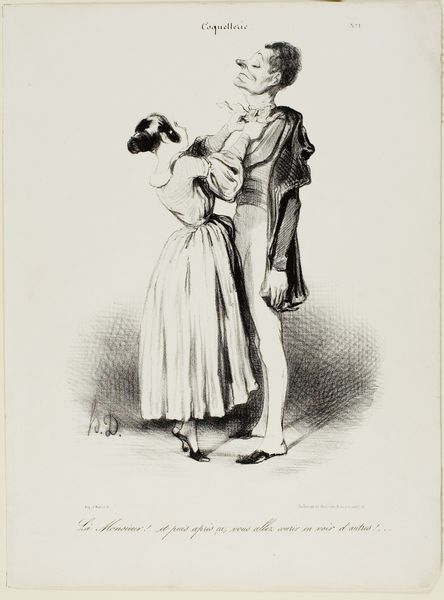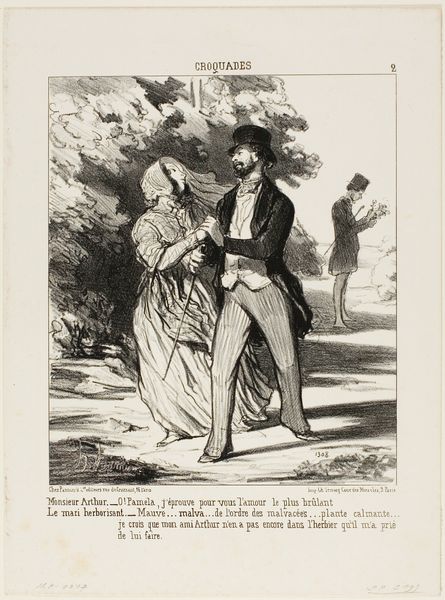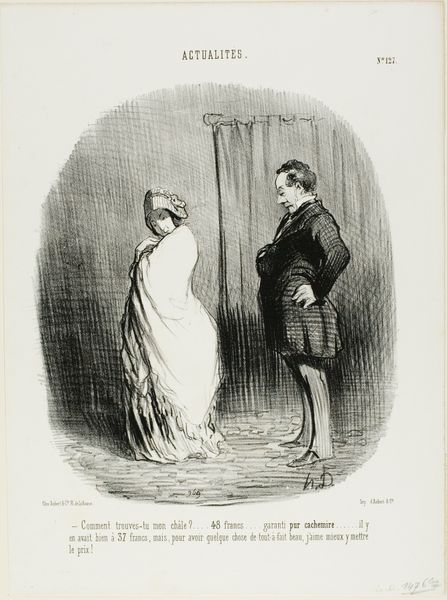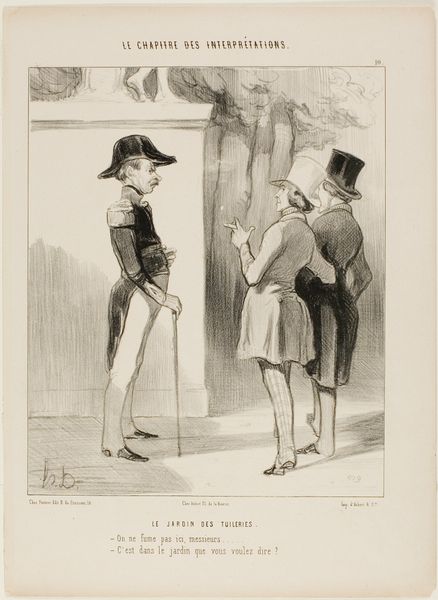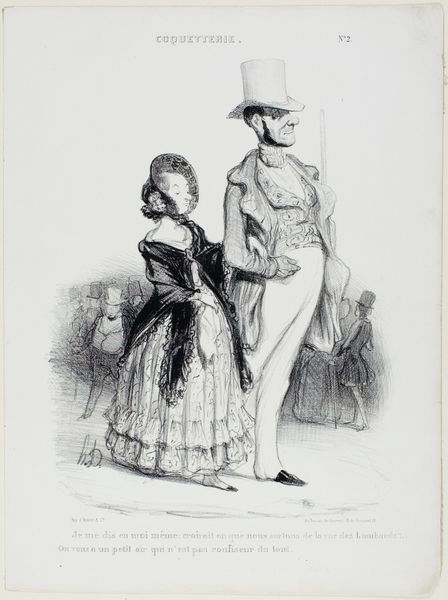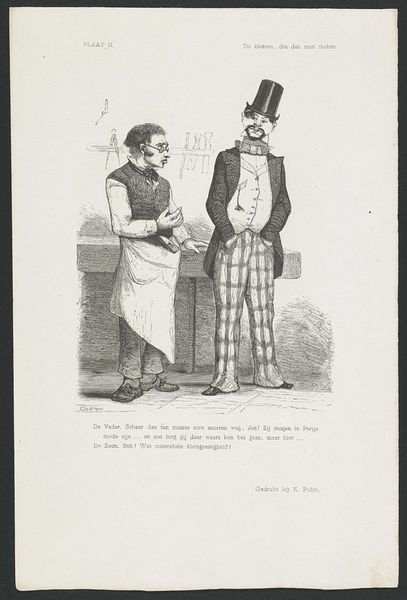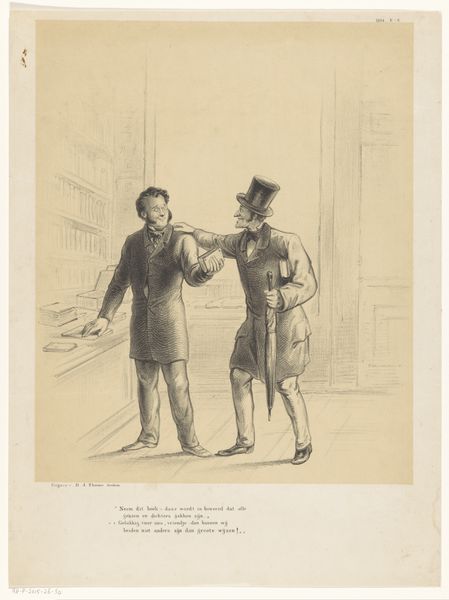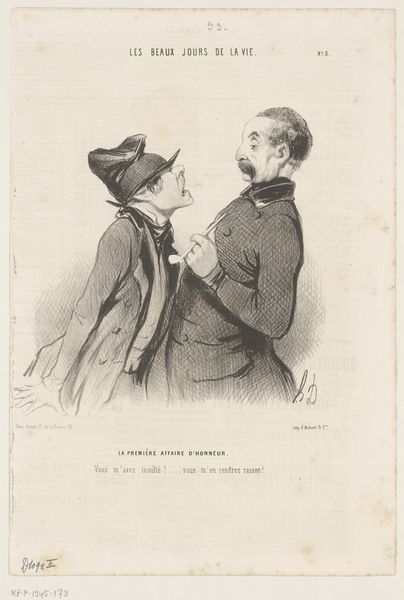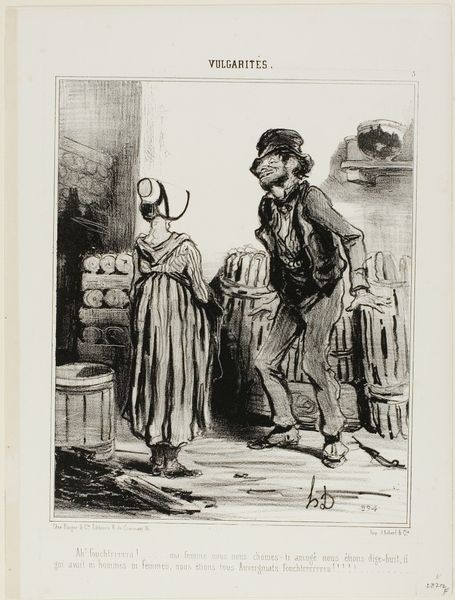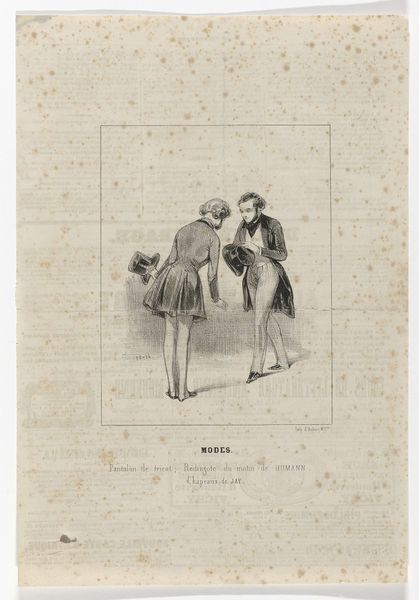
“- You must come to have dinner, my wife will eat in town.. it is just us two men! - Ah, the Devil! I have a terrible headache (aside) and his wife is waiting for me!,” plate 7 from Vulgarités 1841
0:00
0:00
drawing, lithograph, print, paper
#
drawing
#
lithograph
# print
#
french
#
caricature
#
paper
#
romanticism
#
france
#
genre-painting
Dimensions: 247 × 205 mm (image); 338 × 260 mm (sheet)
Copyright: Public Domain
Editor: Here we have Honoré Daumier's lithograph from 1841, plate 7 from "Vulgarités." The scene depicts two men in a rather awkward handshake, and there’s an obvious tension hinted at by the caption beneath. The lithographic lines feel so expressive, almost like rapid notations capturing a fleeting social hypocrisy. What do you see in this work? Curator: For me, this lithograph is a prime example of art as a social product. The lithographic process itself—the specific stone, the labor of the printer—allows Daumier to mass-produce commentary on bourgeois life. This isn’t some rarefied oil painting for a palace; it’s designed for circulation and consumption. Editor: That makes sense. It feels very immediate because of that, and perhaps lends itself to a satirical interpretation. Curator: Exactly. Consider the implications of this mass production. Daumier is creating multiples, affordable images accessible to a broader public, thereby implicating that public in both the exposure and the critique of these social "vulgarities." He questions not only the morals of his subjects, but also the structures that perpetuate this sort of social performance. What kind of materials are we handling? How are they manufactured and distributed to shape opinion? Editor: So you’re saying the medium itself, the very material means of creating and sharing the image, is deeply tied to its message? Curator: Precisely. Daumier isn’t just representing a social situation; he is actively engaging with the public, making us consumers and distributors of the satire. Think about the cheap paper, the readily available ink - it’s all about dissemination to and engagement with the public sphere. Editor: I never thought about the actual process and materials in relation to its critical purpose, but that gives me a totally new appreciation for Daumier's choices here. Curator: That interplay between material and meaning is essential to understanding not just this work, but the larger role of art within society.
Comments
No comments
Be the first to comment and join the conversation on the ultimate creative platform.
